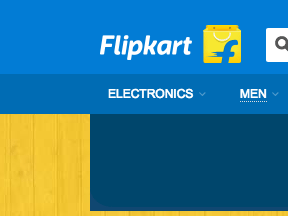“Ecommerce Briefs” is my occasional series of news and developments from online merchants. In this installment, I’ll address the competition between Walmart and Amazon to acquire Flipkart, India’s dominant marketplace.
I’ll also review the closing of Etsy Wholesale, the company’s brick-and-mortar partnership, and Adidas’s decision to shut down hundreds of physical stores to focus on ecommerce.
Flipkart
Amazon and Walmart are engaged in a battle to take a controlling interest in Flipkart, India’s leading local ecommerce player.
Amazon has invested $5 billion in India over the past several years. It apparently sees the country as having vast ecommerce potential. As in the United States, Amazon wants to be the dominant player. Flipkart, an Indian company founded by two former Amazon employees, currently has the upper hand in that market. But it has experienced sluggish growth over the past two years.
The Indian government forbids direct foreign investment in B2C ecommerce. Thus non-Indian companies can only operate as marketplaces for locally sourced goods — not as inventory-based models, where the company owns the goods that are being sold through its platform. (The exception is B2B ecommerce.)
Amazon and Walmart are engaged in a battle to take a controlling interest in Flipkart, India’s leading local ecommerce player.
Flipkart follows the marketplace model. It recently announced that it intends to build a 4.5 million square foot logistics facility in southern India. It would be the largest ecommerce warehouse in India, much larger than Amazon’s largest Indian warehouse of 400,000 square feet.
In 2016 the Indian government issued a rule that it will not permit a single vendor to account for more than 25 percent of sales on an online marketplace that has overseas investment. That severely affected retailer Cloudtail — a joint venture between Amazon Asia and Indian investment company Catamaran — that reached the 25 percent mark in April of 2017, curtailing sales for the remainder of the year.
Despite the roadblocks, Amazon is committed to India because the country’s ecommerce market is expected to grow at a 30 percent compound annual rate, to $200 billion by 2026, according to investment bank Morgan Stanley. At that point India’s online sales will still be only 12 percent of the total, leaving room for plenty of growth.
Amazon recently added six new fulfillment centers and 25 delivery stations throughout the country. It now has a total of 62 fulfillment centers in India and offers next-day service in 30 cities. The new fulfillment centers will specialize in the delivery of large appliances and furniture, two rapidly growing ecommerce product lines in India.
Amazon has not disclosed the terms of its offer for a controlling interest in Flipkart, other than it is willing to offer a breakup fee of $1 to $2 billion, according to Indian business analysts. A breakup fee is paid to the other party if the deal doesn’t close or the side offering the fee backs out of talks.
As for Walmart, the company is looking to bolster its ecommerce efforts in India via acquisitions. Walmart has reportedly completed its due diligence and is hoping to acquire a stake of at least 51 percent in Flipkart with an investment of $10-12 billion.
Flipkart would presumably benefit from Walmart’s experience in logistics and supply chain management. Walmart operates Walmart India Private Limited, a wholly owned subsidiary of Wal-Mart Stores Inc. Walmart India owns and operates 20 Best Price Modern Wholesale stores, a membership-based brick-and-mortar chain, in eight states in India.
Walmart is seen as the more likely acquirer of Flipkart because Amazon and Flipkart together control about 80 percent of the ecommerce market in India. Amazon would presumably face scrutiny from India’s Competition Commission as it could monopolize ecommerce in the country if the deal goes through. Walmart has been interested in Flipkart on and off since at least 2016. But an actual investment is more likely now to thwart rival Amazon.
Etsy Wholesale

Etsy intends to abandon its brick-and-mortar partnerships.
Etsy Wholesale, established in 2014, allows Etsy merchants to sell their wares at premier brick-and-mortar retailers, including Macy’s and Williams Sonoma. However, Etsy has apparently abandoned this effort, alienating many participating merchants. Etsy reportedly stopped communicating with these Etsy Wholesale sellers some time ago, and the company has finally admitted it is likely to end the program.
Some sellers are moving to an alternative site, Indigo Fair, which was founded in 2017, and states it has over 25,000 retailers and boutiques signed up. While the brick-and-mortar effort generated revenue for sellers, it did not contribute much to Etsy’s bottom-line. Its new C.E.O., Josh Silverman, is not a fan of the program.
Adidas
Adidas, the German sportswear company, plans to close 170 branded stores this year after closing 220 last year, mostly in Europe. Adidas operates 2,588 physical stores, including factory outlets.
C.E.O. Kasper Rorsted stated that the internet is “the most important store we have in the world,” according to the Financial Times, which also reported that Rorsted’s goal is to more than double ecommerce sales over the next two years. The company plans to spend almost $1 billion in 2018 on logistics and infrastructure to support online sales. Adidas’s ecommerce sales grew 57 percent in 2017.




